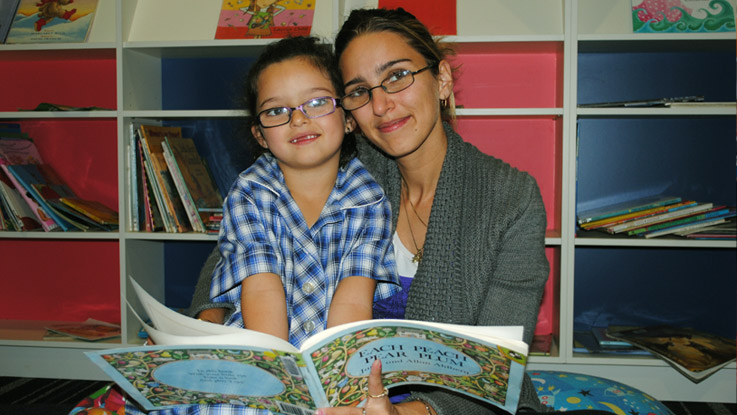
Early intervention is key to boosting year 12 completion rates
Disadvantaged children need to be supported financially and academically at the earliest opportunity to improve their chances of completing school and breaking out of poverty, says Australia’s leading education charity The Smith Family.
Today’s Educational Opportunity in Australia 2015 report, released by the Mitchell Institute, reveals the huge gap between the educational attainment of disadvantaged and non-disadvantaged students.
The Smith Family CEO, Dr Lisa O’Brien said that key to ensuring a child from a disadvantaged background attends and stays at school to complete Year 12, is providing them with ongoing financial and learning support throughout their entire education journey.
“We know that if we can support a disadvantaged child with the school basics that will help them fit in at school,” Dr O’Brien said. “If we also provide some early help with their reading and maths, that child is more likely to become engaged with their learning.
“Providing long term educational support for a child in need right through their primary and secondary years, and working closely with their families and schools, will greatly improve their chance of finishing Year 12 and moving into further education, training or employment.
“It’s also unquestionably of economic and social benefit to Australia as a whole. An early intervention approach is far more efficient in the long-term, compared to the prospect of significant outlays on income support and other welfare measures.”
Dr O’Brien said: “Children cannot choose the circumstances they are born into. For the one in 10 Australian children growing up in jobless families1, limited financial resources can reduce their choices, opportunities and outcomes in life.
“The Smith Family is delivering its programs to more than 134,000 disadvantaged children and families in 94 communities across Australia,” Dr O’Brien said.
“We are seeing great improvements in school attendance, Year 12 completion rates and post-school engagement in employment or further education among the young people we intensively support.
“For example, in 91% of primary schools where The Smith Family works, the average attendance rate of the students we support is the same or better than their peers. This is despite the fact that these students are more disadvantaged than their peers.
“Twelve months after they leave our program, 84% of students are in employment or education, with the vast majority of the rest actively looking for work and/or are engaged in volunteering.
“The Smith Family’s early intervention approach is the most effective way to help young people break out of poverty and it will ultimately positively influence Australia’s future productivity and standard of living.”
1. Australian Bureau of Statistics 2013. Labour force status and other characteristics of families, June 2012.
Media contacts:
Andrew Dickson | National Media Manager (National) - 0421 285 529 | andrew.dickson@thesmithfamily.com.au
Carla Horton | Senior Media Advisor (QLD & WA) - 0423 618 776 | carla.horton@thesmithfamily.com.au
Reid Jermyn | Media Advisor (VIC, SA & NT) - 0412 803 566 | reid.jermyn@thesmithfamily.com.au
Ben Chenoweth | Senior Media Advisor (NSW, ACT & TAS) - 0413 346 934 | ben.chenoweth@thesmithfamily.com.au
The Smith Family is a national children’s education charity that helps young Australians experiencing disadvantage to create better futures for themselves through harnessing the power of education. We partner with around 800 Australian schools and work with over 162,000 children and young people experiencing disadvantage access our education support programs to help them overcome. For more information, visit thesmithfamily.com.au
